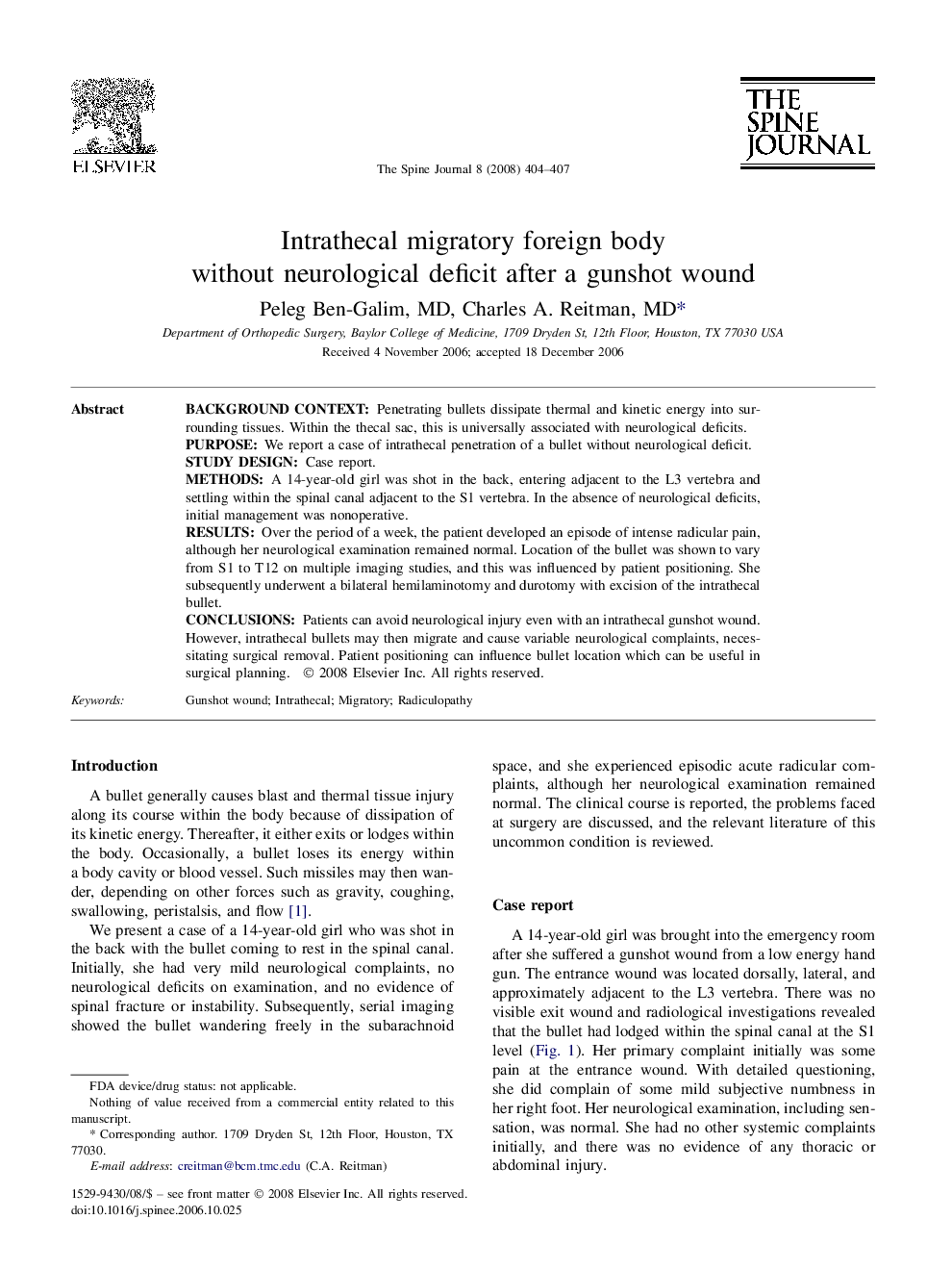| Article ID | Journal | Published Year | Pages | File Type |
|---|---|---|---|---|
| 4099349 | The Spine Journal | 2008 | 4 Pages |
Background contextPenetrating bullets dissipate thermal and kinetic energy into surrounding tissues. Within the thecal sac, this is universally associated with neurological deficits.PurposeWe report a case of intrathecal penetration of a bullet without neurological deficit.Study designCase report.MethodsA 14-year-old girl was shot in the back, entering adjacent to the L3 vertebra and settling within the spinal canal adjacent to the S1 vertebra. In the absence of neurological deficits, initial management was nonoperative.ResultsOver the period of a week, the patient developed an episode of intense radicular pain, although her neurological examination remained normal. Location of the bullet was shown to vary from S1 to T12 on multiple imaging studies, and this was influenced by patient positioning. She subsequently underwent a bilateral hemilaminotomy and durotomy with excision of the intrathecal bullet.ConclusionsPatients can avoid neurological injury even with an intrathecal gunshot wound. However, intrathecal bullets may then migrate and cause variable neurological complaints, necessitating surgical removal. Patient positioning can influence bullet location which can be useful in surgical planning.
